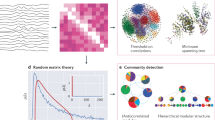Abstract
We address the problem of banking system resilience by applying off-equilibrium statistical physics to a system of particles, representing the economic agents, modelled according to the theoretical foundation of the current banking regulation, the so called Merton-Vasicek model. Economic agents are attracted to each other to exchange ‘economic energy’, forming a network of trades. When the capital level of one economic agent drops below a minimum, the economic agent becomes insolvent. The insolvency of one single economic agent affects the economic energy of all its neighbours which thus become susceptible to insolvency, being able to trigger a chain of insolvencies (avalanche). We show that the distribution of avalanche sizes follows a power-law whose exponent depends on the minimum capital level. Furthermore, we present evidence that under an increase in the minimum capital level, large crashes will be avoided only if one assumes that agents will accept a drop in business levels, while keeping their trading attitudes and policies unchanged. The alternative assumption, that agents will try to restore their business levels, may lead to the unexpected consequence that large crises occur with higher probability.
Similar content being viewed by others
References
Basel Committee on Banking Supervision,International convergence of capital measurement and capital standards (1998),http://bis.org/publ/bcbs04a.htm
Basel Committee on Banking Supervision,Basel ii: International convergence of capital measurement and capital standards: a revised framework (2004),http://bis.org/publ/bcbs107.htm
O. Vasicek,Probability of loss on loan portfolio(KMV Corporation, 1987), http://www.kmv.com
R. Frey, A. McNeil, J. Bank. Financ. 26, 1317 (2002)
Basel Committee on Banking Supervision,International regulatory framework for banks (basel iii) (2010), http://www.bis.org/bcbs/basel3.htm
J. Daníelsson, P. Embrechts, C. Goodhart, C. Keating, F. Muennich, O. Renault, H. Song Shin, An academic response to basel ii (2001), www.bis.org/bcbs/ca/fmg.pdf
L. Borland, J.P. Bouchaud, J.F. Muzy, G. Zumbach,The dynamics of financial markets – mandelbrot’s multifractal cascades, and beyond(Wilmott Magazine, 2005)
J.P. Bouchaud, M. Potters,Theory of Financial Risk and Derivative Pricing From Statistical Physics to Risk Management (Cambridge University Press, Cambridge, 2003)
B. Mandelbrot, R. Hudson,The (mis)Behavior of Markets – A Fractal View of Risk, Ruin, and Reward(Basic Books, USA, 2004)
D. Sornette,Why Stock Markets Crash?(Princeton University Press, 2003)
P. Embrechts, C. Kluppelberg, T. Mikosch,Modelling Extreme Events in Insurance and Finance(Springer-Verlag, 1997)
R.N. Mantegna, H.E. Stanley, Phys. Rev. Lett. 73, 2946 (1994)
S. Ghashghaie, W. Breymann, J. Peinke, P. Talkner, Y. Dodge, Nature 381, 767 (1996)
E. Samanidou, E. Zschischang, D. Stauffer, T. Lux.Rep. Prog. Phys 70, 409 (2007)
R.N. Mantegna, H.E. Stanley, Nature 376, 46 (1995)
T. Wenzel,Beyond GDP: Measuring the Wealth of Nations (GRIN, 2009)
R. Lipsey, P. Steyner,Economics(Harper & Row, USA, 1981)
J.P. da Cruz, P.G. Lind, Physica A 391, 1445 (2012)
S.N.D. Queirós, E.M.F. Curado, F.D. Nobre, Physica A 374, 715 (2007)
V. Plerou, P. Gopikrishnan, X. Gabaix, H.E. Stanley, Phys. Rev. E 66, 027104 (2002)
S.A. Ross, R.W. Westerfield, J.F. Jaffe, Corporate Finance, 6th edn. (McGrawHill, 2003)
IFRS Foundation,International financial reporting standards (2011),http://www.ifrs.org/IFRSs/IFRS.htm
R.C. Merton, J. Financ. 29, 449 (1974)
A.-L. Barabási, R. Albert, Science 286, 509 (1999)
M.-B. Hu, W.-X. Wang, R. Jiang, Q.-S. Wu, B.-H. Wang, Y.-H. Wu, Eur. Phys. J. B 53, 273 (2006)
V. Pareto, Le Cours d’Economique Politique (Macmillan, Lausanne, Paris, 1897)
J.P. da Cruz, P.G. Lind, Bounding heavy-tailed return distributions to measure model risk (2011), http://arxiv.org/abs/1109.2803
M. Defond, C. Lennox, The effect of sox on small auditor exits and audit quality, in Singapore Management University (SMU) Accounting Symposium
P. Erdös, A. Rényi, Publ. Math. (Debrecen) 6, 290 (1959)
R. Piazza, Growth and crisis, unavoidable connection? (2010), www.imf.org
A.G. Haldane, R.M. May, Nature 469, 351 (2011)
G. Iori, S. Jafarey, F. Padilla, J. Econ. Behav. Organ. 61, 525 (2006)
European Commission, IMF, ECB, Portugal: Memorandum of understanding (mou) on specific economic policy conditionality (2011)
Author information
Authors and Affiliations
Corresponding author
Rights and permissions
About this article
Cite this article
da Cruz, J.P., Lind, P.G. The dynamics of financial stability in complex networks. Eur. Phys. J. B 85, 256 (2012). https://doi.org/10.1140/epjb/e2012-20984-6
Received:
Revised:
Published:
DOI: https://doi.org/10.1140/epjb/e2012-20984-6




